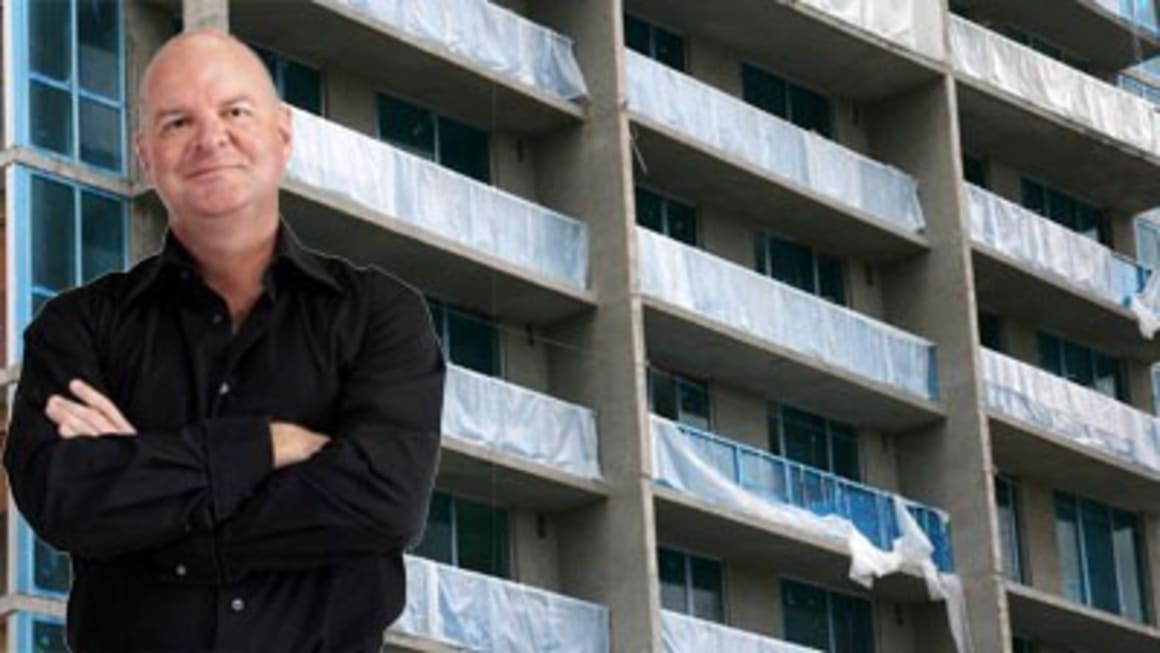Michael Matusik dismisses housing undersupply findings as 'spin'

Property market analyst Michael Matusik has dismissed government forecasts that Australia is heading for a massive undersupply of housing over the next two decades, arguing that politics and “vested interests” are at play.
The National Housing Supply Council’s State of Supply Report for 2011 forecasts that at the current rate of new housing construction, Australia will have a shortfall of 640,000 dwellings by 2030.

Source: State of Supply Report
According to the report, the gap between housing demand and supply increased by 28,200, (nearly 18%) to 186,800 housing units in the 12 months to the end of June 2010, with NSW and Queensland having the largest shortfalls of 73,700 and 61,900 homes respectively.
The Real Estate Institute of Australia, Housing Industry Association , Urban Taskforce Australia, Master Builders Australia and lobbying group Australians for Affordable Housing have all responded to the report by demanding government action to address the shortfall in housing.
But Matusik says the people who compiled the report have a “vested interest in finding an undersupply – they keep their posts”.
According to Matusik, there will be no undersupply unless migration picks up enormously.
“Once you look into the facts and ignore the spin, you find that Australia’s new housing market isn’t that undersupplied at all.
“Housing industry and banking economists keep reminding Australians of a massive housing shortfall of around 300,000 new homes that will double in size over the next decade,” he says.
“Australia’s population growth has slowed by close to 150,000 in just two years, with a 100,000 drop in the actual growth rate over the last 12 months. As a result, the underlying demand for new housing has dropped from 180,000 starts per annum to around 125,000. While dwelling starts are declining, we are now building too much stock.
“Unless new housing starts decline in earnest or population growth accelerates, Victoria, South Australia, Tasmania and the Northern Territory face an oversupply. Perth and Canberra are better positioned, with Queensland currently at equilibrium and New South Wales undersupplied.”
“Yes, we don’t have enough affordable new homes, but we have an ample supply of new dwellings pitched at speculators,” he says.
Matusik occupies a lonely position.
AAH campaign manager Sarah Toohey says the report “shows an unacceptable shortfall in the supply of housing in Australia”.
“Australia has a structural problem in the housing market and only a comprehensive plan that includes extra affordable housing supply, taxation reform, increases to and reform of Commonwealth Rent Assistance and better and more targeted support to first-home buyers will deliver the affordable housing solutions that low- and middle-income Australians need,” she says.
HIA chief executive Graham Wolfe says the modelling in the report and forecast of a 640,000-dwelling shortfall by 2030 is “not inconsistent with the trends that HIA’s own modelling has identified”.
“As a nation, we must embark on a significant housing policy reform agenda if we are to reinvigorate the residential building sector and keep the great Australian dream of home ownership a reality,” he says.
Wilhelm Harnisch, CEO of Master Builders, says the report highlights the growing problem of undersupply of housing and the urgent need for all governments to address the problem through a co-ordinated policy response.
“The continuing global economic uncertainty has contributed to the current sluggish housing market conditions but is masking the true extent of the housing undersupply challenge,” he says.
The State of Supply Report says that despite weaker market conditions, the housing shortage continues to widen.
It says that for the year to June 30, 2010 an additional 131,000 houses were built, 9,700 fewer than were projected in the previous report.
At the same time underlying demand for housing grew by an estimated 159,200 dwellings over this period resulting in a shortfall 28,200 for the year and pushing up the revised 2009 shortfall of 158,500 to 186,800 in 2010.
According to the report, a large reason for the gap widening is “a growing divergence between underlying demand, which is demographically driven, and effective demand, which is what actually happens in the market and is driven by economic as well as demographic factors”.
“The building industry has also had to face up to a weaker market, and the volume of property being built has fallen significantly. Approvals for building dwellings other than detached houses (largely multi-unit apartment buildings) saw a longer downturn than those for building houses following the global financial crisis,” the report says.
“The council believes that this is partly due to more limited access to development finance for this form of development subsequent to the GFC and in the light of market conditions.”
The report was launched by new Minister for Housing and Homelessness Robert McClelland, who says housing undersupply challenges will be examined as part of the Housing Supply and Affordability Reform agenda.
“The government is working with the states to finalise this examination of supply constraints in the housing market, with a report to be delivered to the Council of Australian Governments soon,” he says.